Spanish Paella
- By Jennifer Segal
- Updated May 15, 2025
- 57 Comments
- Leave a Review
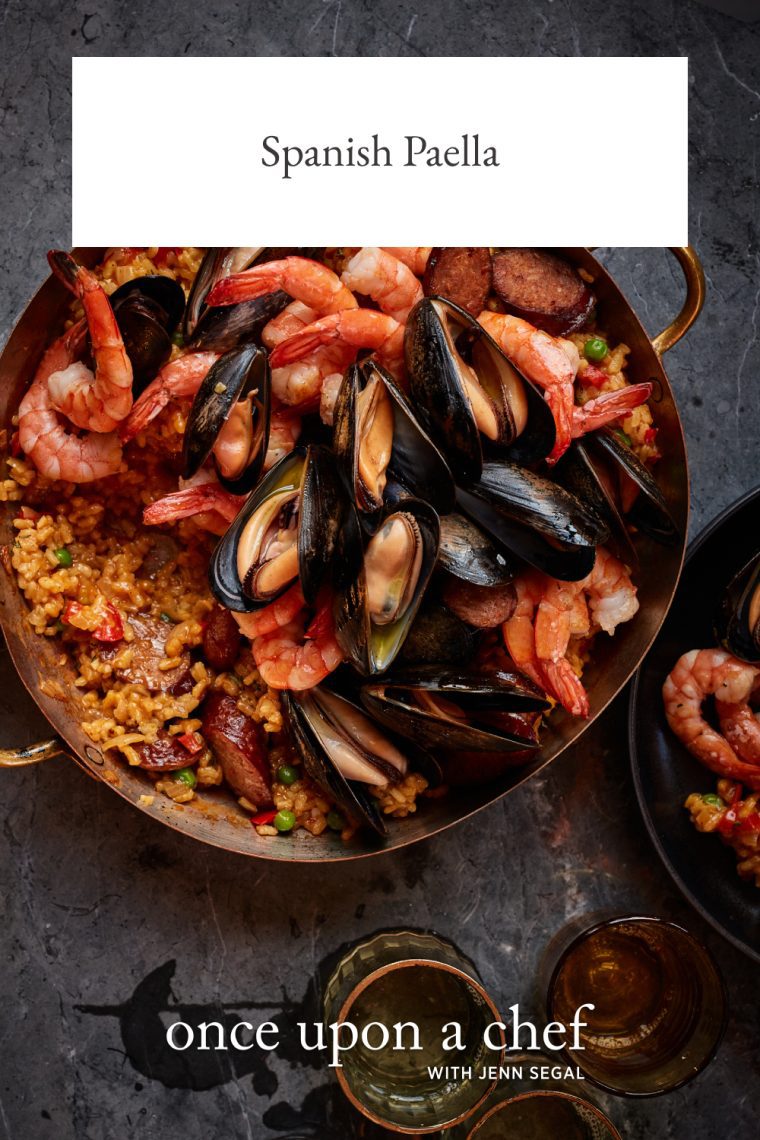
This post may contain affiliate links. Read my full disclosure policy.
Big flavor, festive vibes, and surprisingly easy to pull off—this Spanish paella recipe brings the wow-factor without the stress.
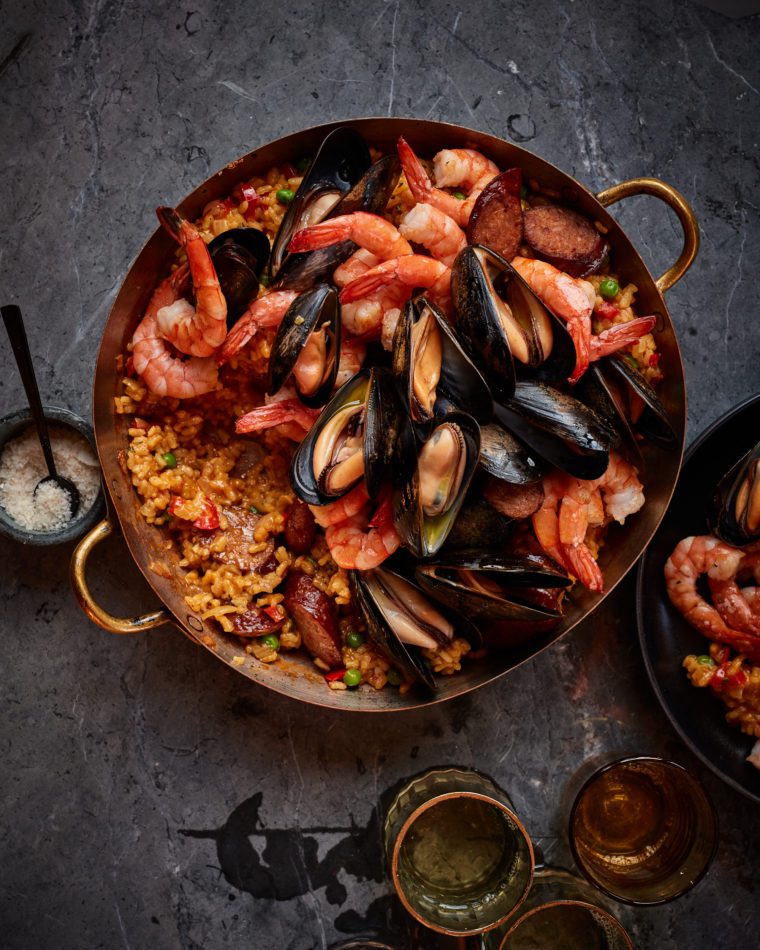
Photo by Johnny Miller (Clarkson Potter, 2021)
Does the idea of making Spanish paella (pronounced pie-AY-uh) feel a little intimidating? I get it—between the long ingredient list and the special pan, it seems like the kind of dish that’s better left to restaurants. But honestly, it’s way easier than it looks, and you don’t need a paella pan to make a really good one at home.
Paella is a traditional Spanish rice dish from Valencia, usually made with a mix of meat or seafood and saffron-scented rice. In my family, it’s something we love to share when we’re out for Spanish food, but it’s just as fun to make yourself, especially with a glass of sparkling sangria in hand.
My easy paella recipe keeps things simple with quick-cooking smoked chorizo, shrimp, and mussels. It’s the perfect festive dish for a weekend dinner party. And it’s incredibly versatile. Don’t have mussels? Swap them for clams. Want to add chicken? Go for it. There are so many ways to make it your own.
“This is paella within reach—and it’s fantastic. My husband, 20-year-old son, and teenage daughter all raved.”
If you love seafood-packed dishes like this one, try my cioppino or a warm, savory bowl of Louisiana gumbo next.
Sausage & seafood Paella ingredients
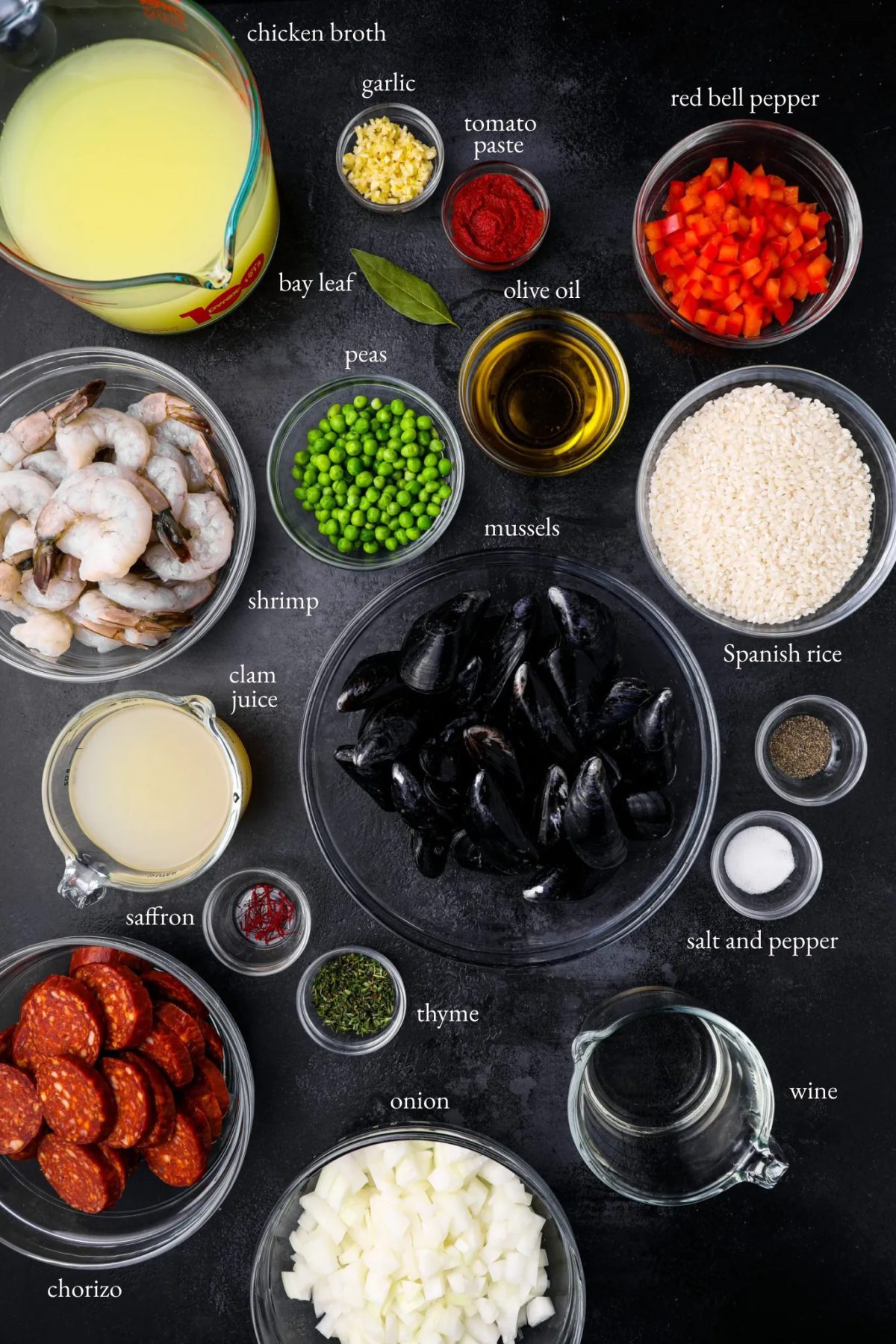
- Extra-virgin olive oil: Adds richness and helps to sauté the chorizo and vegetables.
- Smoked chorizo sausage: Adds a smoky, spicy depth of flavor. It’s typically located near the hot dogs and bacon in the supermarket. Make sure you’re grabbing Spanish chorizo which is already cooked and not the Mexican-style which is often uncooked. .
- Aromatics and Vegetables: Onion, red bell pepper, and garlic make the vegetable base that deepens the flavor of the dish. Peas add a pop of color and sweetness.
- Tomato paste: Adds richness, tanginess, and color to the paella.
- Bomba rice: This short-grain rice is the key ingredient in paella. It’s prized for its ability to absorb three times its volume in broth (rather than the normal two times) while still remaining firm. You can find it in many grocery stores or order the rice online.
- Cooking broth: Chicken broth aids in cooking the rice while bottled clam juice boosts the seafood flavor.
- Saffron: Adds the dish’s signature golden color and earthy, aromatic flavor. Grown in places like Iran, Spain, India, and Greece, saffron comes from the tiny stigmas of the Crocus flower and is hand-harvested—hence the price tag. Crush the threads before adding for maximum flavor, and use it sparingly to avoid a medicinal taste. To store, wrap in foil and keep in an airtight container in a cool, dark place for up to 6 months.
- Seafood: Large shrimp are the key seafood element while mussels add a briny, seafood flavor. Mussels are sold live and stay fresh in the refrigerator for a few days. Store them in a bowl covered with a damp paper towel, not in an airtight container.
- White wine: Used to steam the mussels, it adds lovely flavor and acidity.
- Jump to the printable recipe for precise measurements
How to make Paella
Step 1: Brown the chorizo. In a paella pan, large enameled cast-iron pan, or a large skillet, cook the chorizo in 2 tablespoons of olive oil until it’s lightly browned and some of the fat has rendered. Transfer the sausage to a plate.

Step 2: Cook the vegetables. Add the onion and bell pepper to the same pan and cook until softened, about 5 minutes. Add the garlic and cook 1 minute more. Last, stir in the tomato paste.
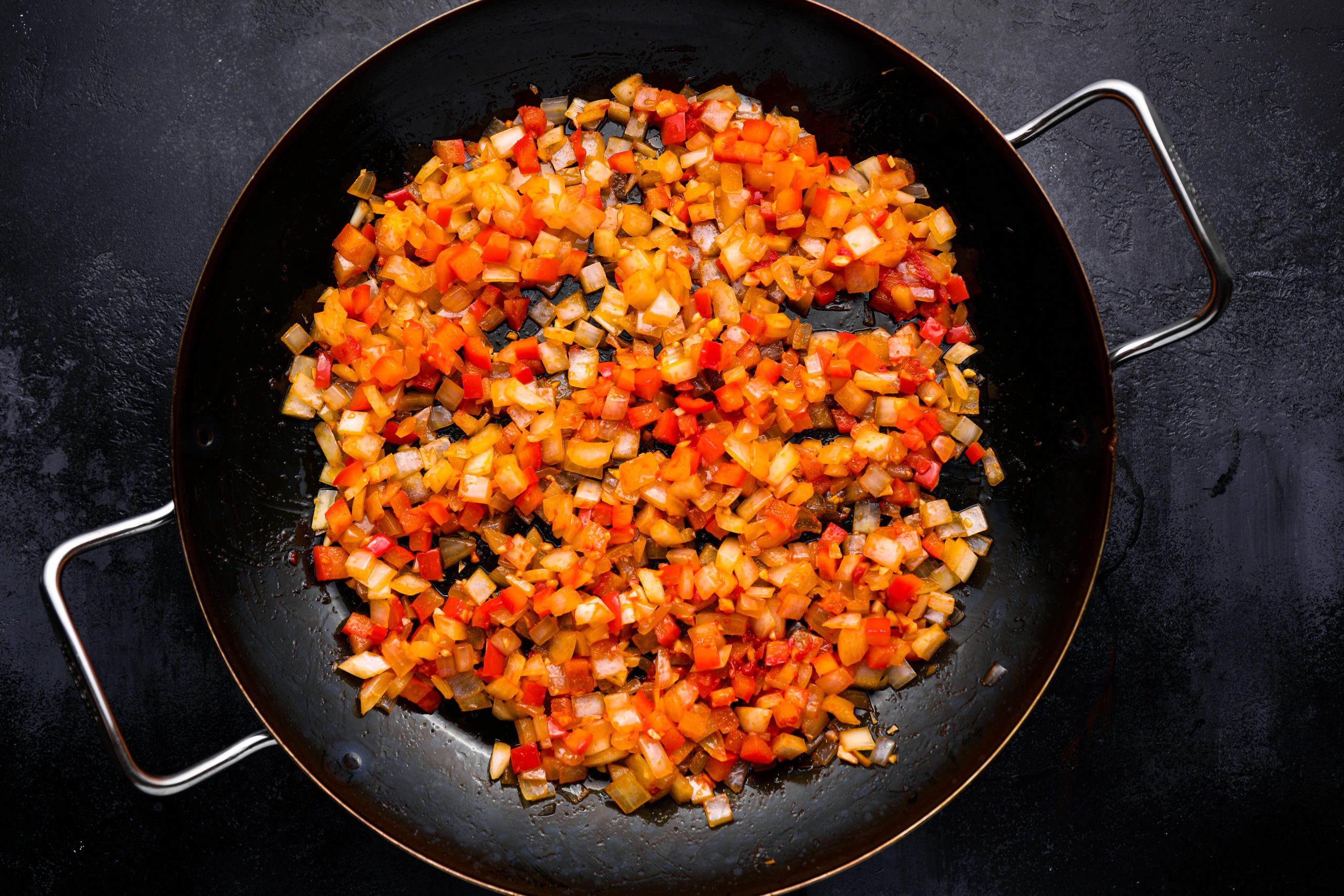
Step 3: Add the rice. Add the rice and cook until lightly toasted and coated with the vegetable mixture, about 2 minutes.

Step 4: Add the cooking liquid and seasoning. Add the broth, clam juice, saffron, bay leaf, salt and pepper to the pan. Bring it to a boil.

Step 5: Simmer. Cover with a lid and simmer over low heat until the rice is tender and most of the liquid is absorbed, about 15 minutes. Stir in the peas, browned chorizo, and thyme, then remove from the heat and keep warm while you cook the seafood.

Step 6: Cook the shrimp. In a separate skillet, heat 2 tablespoons of oil until shimmering. Add the shrimp, season with salt and pepper, and cook until pink and cooked through.
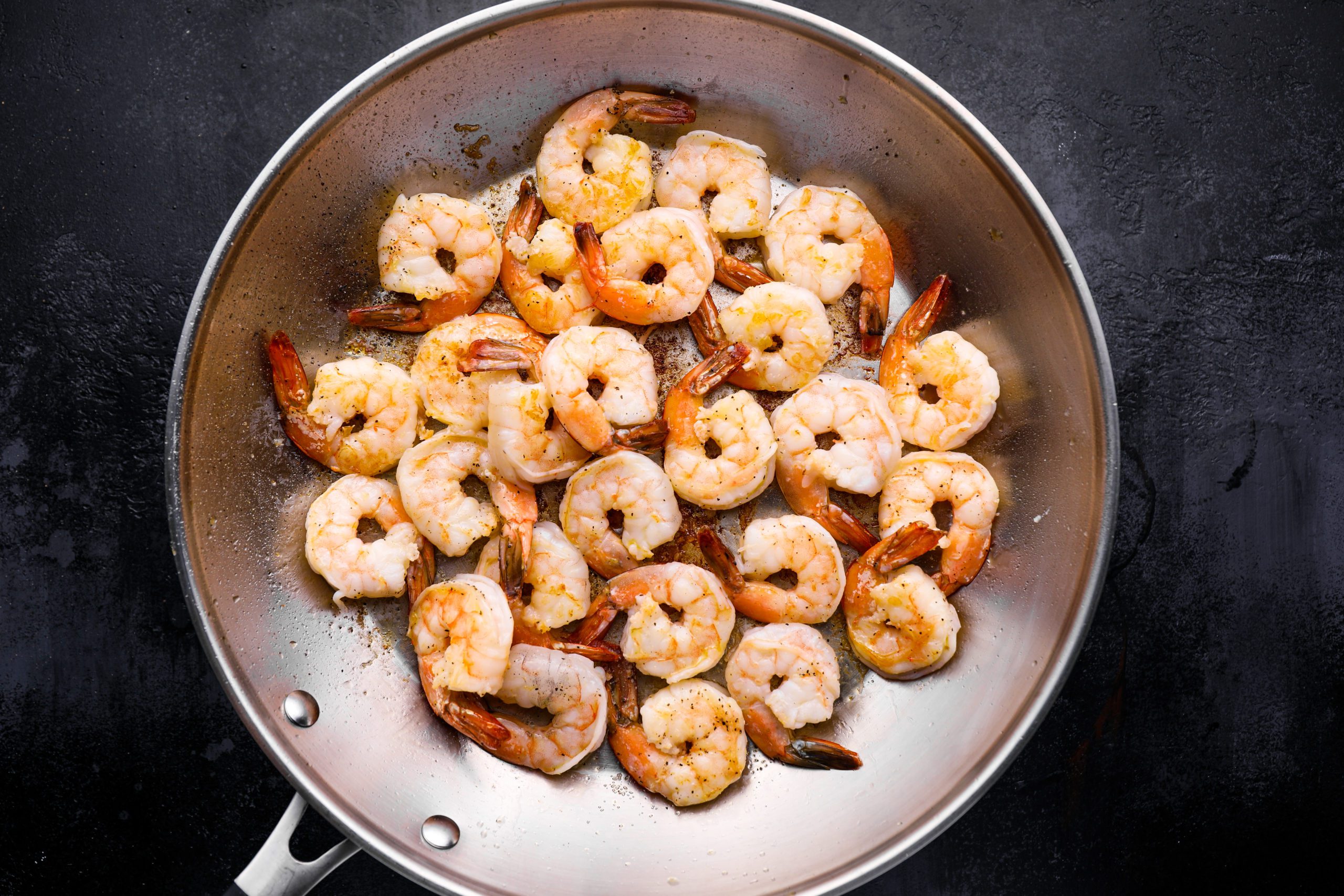
Step 7: Add to paella. Add the shrimp to the paella and cover to keep warm.
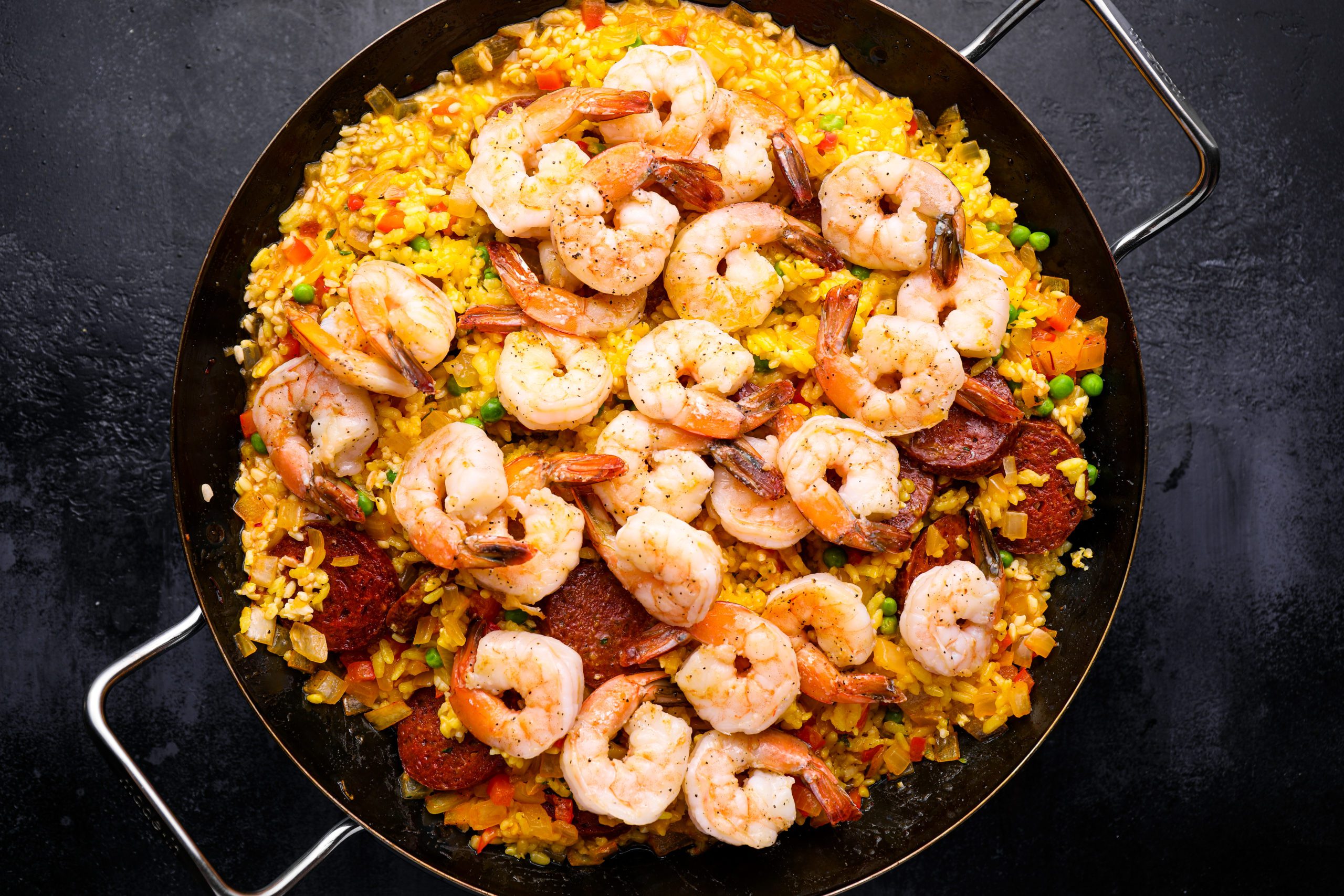
Step 8: Steam the mussels. Bring the wine to a boil in a skillet over medium heat. Add the mussels, cover with a lid, and cook until the mussels open.

Step 9: Finish the dish. Pour the mussels and their cooking liquid over the paella. Drizzle the remaining oil over the paella. Serve up your Spanish sausage and seafood paella with a bowl of gazpacho Andaluz to start and flan or churros for dessert.
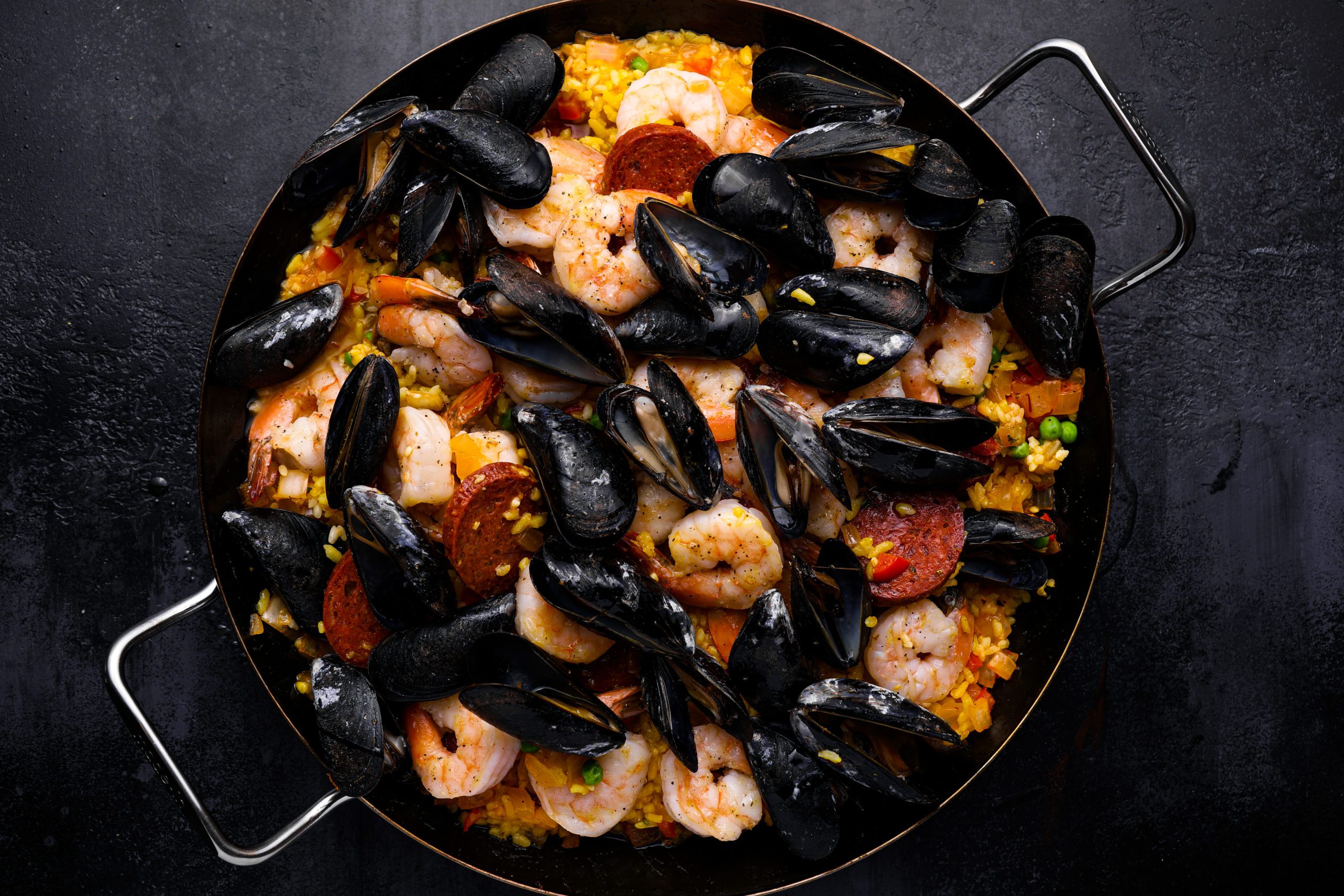
Paella Variations + Tips
- No Stirring Needed: Once you add the rice, allow it to cook without any stirring.
- Using Different Proteins: The original paella from Valencia includes snails and rabbit! Chicken, pork, or even duck would be great additions. For this recipe, just cook any extra proteins separately and stir them in before serving.
- How to Make Socarrat – the Crispy Bottom: Socarrat is the crispy layer of rice that forms on the bottom of the pan—it’s considered a delicacy in paella and adds deep, toasted flavor. To get it, once the rice is cooked and you’ve stirred in the peas, chorizo, and thyme, uncover the pan and turn the heat up to medium-high for a few minutes. Watch closely and listen for a gentle crackling sound. As soon as the rice is crisp on the bottom, take the pan off the heat and move on with the recipe.
Video Tutorial
You May Also Like
Spanish Paella
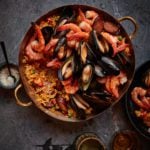
This Spanish paella is a flavor-packed, one-pan meal that brings the flavors of Spain right to your table.
Ingredients
- 5 tablespoons extra-virgin olive oil
- 12 ounces smoked chorizo, sliced ½-inch thick on the bias (see note)
- 1 medium yellow onion, finely chopped
- 1 small red bell pepper, finely diced
- 3 large cloves garlic, finely chopped
- 1 tablespoon tomato paste
- 1½ cups Bomba rice or other Spanish paella rice (see note)
- 3½ cups chicken broth
- 1 cup bottled clam juice
- Generous pinch saffron threads, about ⅛ teaspoon crumbled (see note)
- 1 bay leaf
- Salt
- Freshly ground pepper
- ½ cup frozen peas, thawed
- 1 tablespoon chopped fresh thyme
- 1 pound large (31/35) shrimp, peeled and deveined
- ⅓ cup white wine
- 1 pound mussels, scrubbed and debearded (see note)
Instructions
- In a 13-inch paella pan, large enameled cast-iron pan (like a Le Creuset), or a large skillet, heat 2 tablespoons of the oil over medium heat. Cook the sliced chorizo, flipping once, until lightly browned and some of the fat has rendered, about 3 minutes. Using a slotted spoon, transfer the browned chorizo to a plate and set aside. Add the onion and bell pepper to the pan and cook, stirring frequently, until softened, about 5 minutes. Add the garlic and cook 1 minute more. Stir in the tomato paste.
- Add the rice and cook, stirring constantly, until coated with the vegetable mixture, about 2 minutes. Add the broth, clam juice, saffron, bay leaf, ¾ teaspoon salt and ¼ teaspoon pepper; bring to a boil. Cover and simmer over low heat, without stirring, until the rice is cooked and most of the liquid is absorbed, about 15 minutes. Discard the bay leaf. Stir in the peas, then the chorizo (along with any accumulated juices) and thyme; taste and adjust seasoning, if necessary. Remove the pan from the heat and cover.
- In a separate large skillet, heat 2 tablespoons of the oil over medium heat until shimmering. Add the shrimp and sprinkle with ¼ teaspoon salt and a few grinds of pepper; cook, turning once, until the shrimp are pink and cooked through, about 3 minutes. Add the shrimp to the paella and cover to keep warm.
- In the same skillet that you cooked the shrimp (no need to rinse it first), bring the wine to a boil over medium heat. Add the mussels and cover with a lid; cook, shaking the skillet occasionally, until the mussels open, 2 to 4 minutes. Pour the mussels and their cooking liquid over the paella.
- Drizzle the remaining 1 tablespoon of oil over the paella and serve.
- Note: Smoked chorizo is usually located near the hot dogs and bacon in the supermarket. It is already fully cooked, and it is not necessary to remove the casings.
- Note: Bomba or Spanish paella rice, a short-grain rice prized for its ability to absorb three times its volume in broth (rather than the normal two times) while still remaining firm, can be found in many grocery stores or you can order it online.
- Note: Saffron is harvested by hand, making it the most expensive spice in the world. Usually, it is sold in small quantities, and you only need a pinch. Saffron threads should be crushed before they are added to recipes to release their flavor. Simply use your thumb and forefinger to crush the threads into fine pieces. Be sure to use only the amount that the recipe calls for; too much saffron can give food a medicinal taste. Store any leftover saffron for up to 6 months wrapped in foil and placed in an airtight container in a cool, dark place.
- Note: When you purchase mussels, they're still alive. After bringing them home from the store, they will stay fresh in the refrigerator for several days. Because they're alive, avoid storing them in an airtight container. Instead, place them in a bowl covered with a wet paper towel. To clean mussels prior to cooking, put them in a colander and run them under cold running water. Use your hands or a scrubbing brush to remove any sand or remaining debris. If beards (the little tuft of fibers the mussel uses to connect to rocks or pilings) are present, cut or scrape them off with a paring knife, or use your fingers to pull them sharply down toward the hinged point of the shells. The mussels should be tightly closed. If you see a mussel that is open, tap it gently against the counter; in a live mussel, this will trigger a reaction to close its shell. If the mussel doesn't slowly close, it has died and should be discarded. Discard any mussels with cracked shells as well.
Nutrition Information
Powered by ![]()
- Per serving (6 servings)
- Calories: 763
- Fat: 37 g
- Saturated fat: 11 g
- Carbohydrates: 54 g
- Sugar: 5 g
- Fiber: 2 g
- Protein: 48 g
- Sodium: 1494 mg
- Cholesterol: 197 mg
This website is written and produced for informational purposes only. I am not a certified nutritionist and the nutritional data on this site has not been evaluated or approved by a nutritionist or the Food and Drug Administration. Nutritional information is offered as a courtesy and should not be construed as a guarantee. The data is calculated through an online nutritional calculator, Edamam.com. Although I do my best to provide accurate nutritional information, these figures should be considered estimates only. Varying factors such as product types or brands purchased, natural fluctuations in fresh produce, and the way ingredients are processed change the effective nutritional information in any given recipe. Furthermore, different online calculators provide different results depending on their own nutrition fact sources and algorithms. To obtain the most accurate nutritional information in a given recipe, you should calculate the nutritional information with the actual ingredients used in your recipe, using your preferred nutrition calculator.
See more recipes:
Comments
Add a Comment Cancel reply
This site uses Akismet to reduce spam. Learn how your comment data is processed.


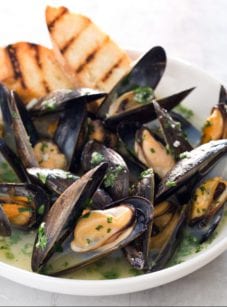


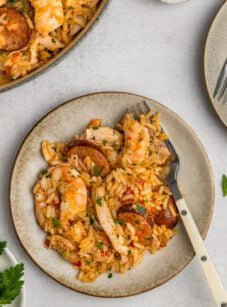
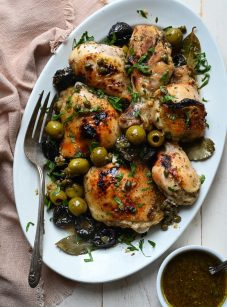
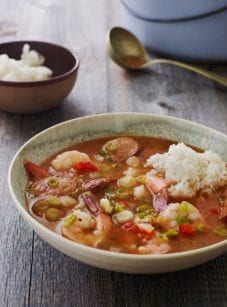

Incredible! Added a dozen clams. Restaurant quality! Thank you..
This recipe is wonderful! I did embellish it with scallops, Black Forest ham cut into 1/4” cubes, chicken thighs, a red and a green pepper (diced). I served it with a good Sauvignon Blanc and fresh fruit for dessert. This was our 55th anniversary dinner. Thanks for a delicious recipe!
This looks amazing and am looking forward to trying. I’m concerned my skillet isn’t large enough and since I have an electric solid surface cook top, can’t use cast iron. Do you think an electric skillet could work? If so, what temp would you recommend?
Hi Stephanie, it should work, and I’d just stick with the heat levels in the recipe.
Why do foreigners always put chorizo on the poor paella. If someone wants to make it more like the tradicional one, the only meat we usually use is chicken, bunny or both. Also instead of peas, better use green beans and broad beans.
Thank you for all of your wonderful receipes!
I have seen several of your recipes requiring mussels as an ingredient. The pictures you post have robust meaty mussels, yet when purchased at the stores like Giant or Whole Foods, the mussel meat is small and skimpy. Where do you purchase your mussels?
Hi Carolyn, thanks for the nice words about the recipes! I typically get my mussels at Whole Foods or a store that specializes in seafood.
This is one of my favorite dishes. I modified using some frozen veggies. Thanks again for the great recipe.
Hi Jenn,
I made this last night for a get together with girl friends. They were wowed! Turned out delicious as do all of your recipes. Have made paella in the past but this was the best yet!
I added scallops, otherwise followed the recipe exactly. Thank you!
Delish! Just made this recipe and it was my first paella. We loved it !! Thanks again for sharing ☺️
Hi Jenn. I’ve been making some of your recipes lately and really enjoy! I saw this recipe this week and have added to my list to make within the next week. Here’s my comment/question: there’s a great Spanish style Chicago restaruant called Cafe Ba-Ba-Reeba that makes amazing paella. They always warn you that the dish takes extra time to get the crust at the bottom of the dish. Do you have a suggestion on how to acheive this with your dish? I’m not sure if this is best acheieved over the stove or in the oven. Also, wouldn’t want to overdo the seafood trying to achieve this so timing might be different?
Hi Mike, To achieve the crispy bottom (or socarrat), after the rice is cooked and the peas, chorizo, and thyme are mixed in, uncover the pan and increase the heat to medium-high for a few minutes. Watch closely and listen for the rice to crackle. Once you achieve the desired crispness, remove the pan from heat and continue with the recipe by adding the cooked shrimp and mussels as directed. Hope that helps and please LMK how it turns out!